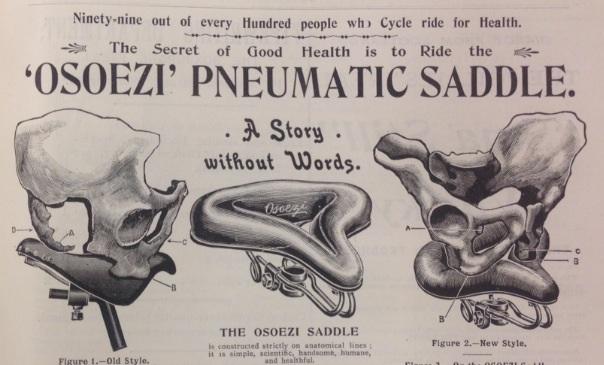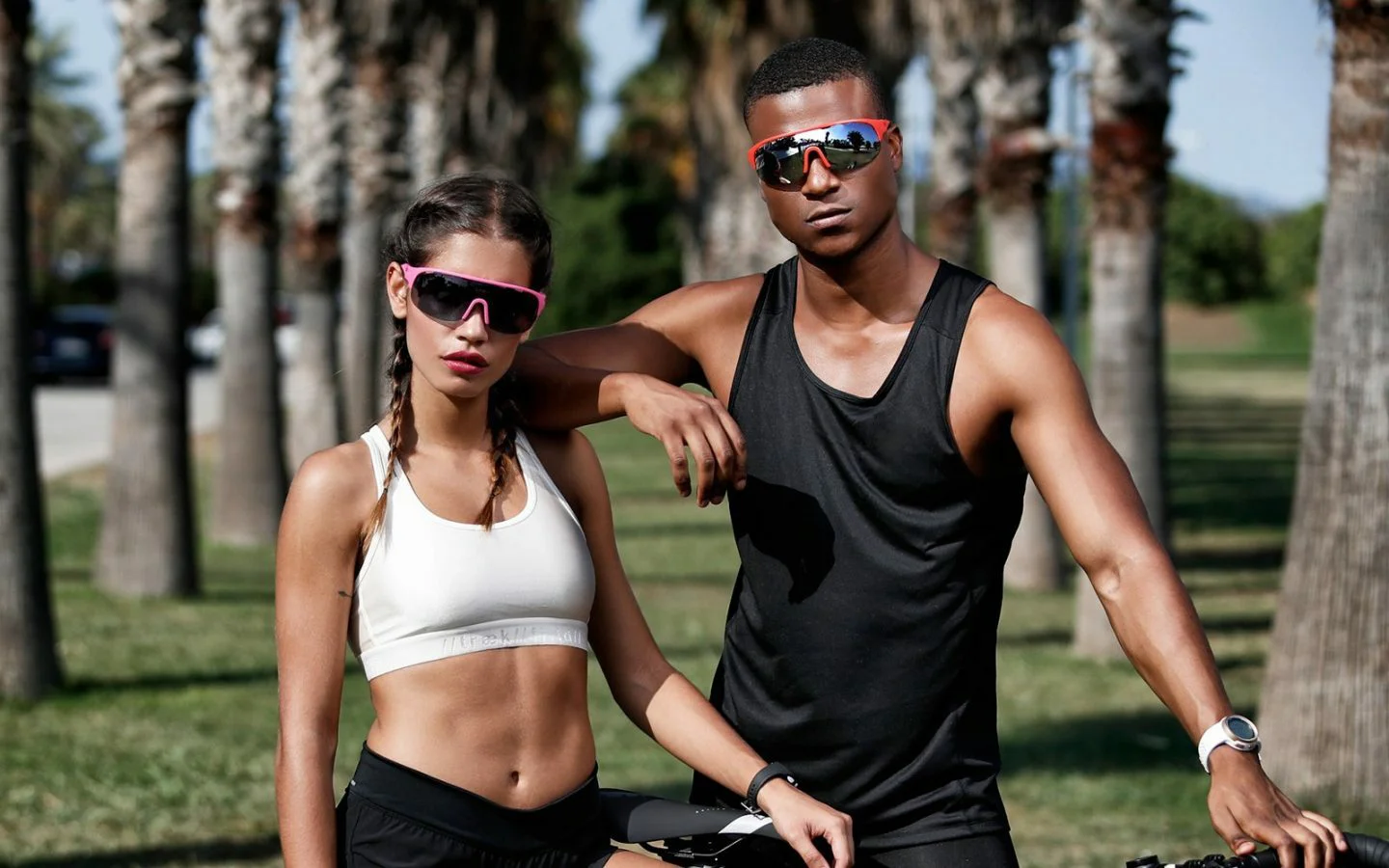No, cycling is not bad for the sexual health of women and men, it actually is very beneficial as it prevents various diseases and conditions. We could stop here, but let’s provide some data to back up this statement plus a bit of history.
Historical background

Concerns regarding the effects cycling might have on sexuality and sexual health are nothing new. Ever since the bicycle was invented, it was seen as a potential “problem” for men and a demonic sexual stimulant for women. It is worth remembering that back then women rode horses sitting aside because riding astride was not “feminine” and was considered dangerous for fertility. The growing popularity of safety bicycles clashed with the morality of the late nineteenth and early twentieth centuries, causing countless attacks on two-wheelers. They must have thought that the smiles on women’s faces when riding bicycles were not the result of their happiness from pedaling, but rather of the fact that they were continually having orgasms. Even feminists like Charlotte Smith, who fought fiercely for women’s rights, wrote that the bicycle was “…causing immoral associations both in language and dress […] and making women not only unwomanly, but immodest as well […] luring young girls into paths that lead directly to sin”.
Does cycling affect fertility?
The misconception that cycling can have a harmful effect on the fertility of both women and men has been sustained over the years up to the present day. Fortunately, we no longer hear or read words like those mentioned above as far as women are concerned, but since the beginning of the 21st century male infertility has been associated with cycling and the general use of bicycles.

What’s going on? To begin with, birth rates in the Western world are very low. This concerns everyone and we are trying to find its causes and possible solutions. One thing leads to another, and various studies appear (1, 2 and 3) associating infertility, erectile dysfunction and even prostate cancer to sitting on a saddle.
The vast majority of these studies are based on very small samples without sufficient statistical power, their results have not been clinically validated and they lacked control groups for comparison. In 2014, a study was published by Cycling for Health UK involving over 5,000 cyclists that concluded that “there was no association between cycling time and ED or infertility, disputing the existence of a simple causal relationship.”
As far as women are concerned there is a study from the Norwegian University of Science and Technology suggesting that very intense training reduces fertility. The study was conducted on nearly 3,000 women. They found that very frequent and hard physical exercise seems to reduce a young woman’s fertility, but this decrease only lasted as long as the intense training was ongoing. This is consistent with the fact that many female professional cyclists stop training intensely when they want to become mothers. We can also conclude that a woman using her bike as a means of transport or cycling moderately is not risking reduced fertility, quite the contrary.
Does cycling cause erectile dysfunction?
This is undoubtedly one of the biggest concerns for men. It’s not a typical subject of conversations among cyclists so to help beginners and regular riders alike, it’s best to rely on research data. A study published in 2018 surveyed nearly 4,000 cyclists, runners and swimmers, the two latter as a comparison group. It concluded: “cycling does not result in worse ED (erectile dysfunction) or LUTS (lower urinary tract symptoms) compared to swimming or running but may make one more prone to urethral strictures, genital numbness, and saddle sores.”

In an article for The Guardian, Benjamin Breyer, researcher on the aforementioned study and associate professor of urology at the University of California, says that “just sitting on the couch or in front of the computer eight hours a day is the worst thing for your sexual and overall health.” In the same article, Gurminder Mann, consultant urological surgeon, agrees with the study and adds a touch of humor to the findings: “This study refutes that hypothesis and should reassure men to carry on cycling. It is especially helpful to men of a certain age as cycling gives benefits to the heart and has low impact on joints. Indeed, the main risk of cycling is that to your body image. The wearing of lycra offers no place to hide.”
Therefore, the causes of erectile dysfunction have more to do with lifestyle, stress and poor cardiovascular health than with regular cycling. Diabetes, high blood pressure, smoking, and drinking alcohol are all causes of erectile dysfunction and lead to the increased risk of heart attack or other cardiovascular problems. So if you are a cyclist and suffer erectile dysfunction you should see your doctor because it is very likely to be a symptom of a more serious health problem.
Is numbness in the genital area bad?
Every cyclist, whether male or female, occasional or regular, has suffered from this problem to a greater or lesser extent. It is not good to get on the bike, start pedaling and after 20 minutes feel numbness, tingling or loss of sensation in the genital area. Neither for women nor for men.
The last study we referred to warns about this and provides a clear explanation of the potential risk, as well as a recommendation: “cycling may increase risk of inducing perineal numbness, but that itself may not necessarily translate into worsened sexual function. Despite an unclear association, it is best to minimize numbness as much as possible while riding.”
How to reduce or avoid numbness?
Three tips: A biomechanical study to properly fit the rider to the bike, a saddle with the right shape and size for you, and a pair of good bib shorts with a proper chamois. The first two recommendations usually go together but you don’t always find the right saddle the first time. It takes trial and error. If you’re looking for a new pair of bib shorts, here is Siroko’s guide to choosing the best cycling bib shorts, suitable for both sexes.
During the biomechanical study, be clear about what worries you and if you suffer from numbness or any other problem on a regular basis. This way the fit will be tailored to your specific needs. Remember that not all of us have the same flexibility or practice the same type of cycling. We also tend to have different postures on the bike and we use it differently in terms of distance, duration and frequency. The fit of the bike won’t be the same for a person who uses it from time to time, but once on the saddle, spends several hours pedaling, as it is for a cyclist who uses it on a daily basis to practice intensively.
Cycling and prostate cancer
A study published in 2020 conducted in association with Global Cycling Network (GCN) surveyed 8,074 cyclists and found no correlation between cycling and prostate cancer. The theory that sitting on a saddle irritates and inflames the prostate, and therefore the rider becomes more prone to prostate cancer is not backed up by science. Quite the opposite. The very same positive effects that cycling has on cardiovascular health also mean it helps avoid prostate cancer. There is a finding in the study that confirms this point: the probability of a man suffering from this cancer is 15%. The percentage among the cyclists surveyed is 0.5%.

In conclusion, the positive effects of cycling and simply riding a bike are undeniable. It does not cause infertility, erectile dysfunction or prostate cancer, but an incorrect position on the bicycle can cause problems of numbness in the genital area. This can be solved with a biomechanical study, a proper saddle and good bib shorts. In any case, any symptom or indication that something is wrong should be reported to the doctor in case there is an undiagnosed disease or condition behind.




